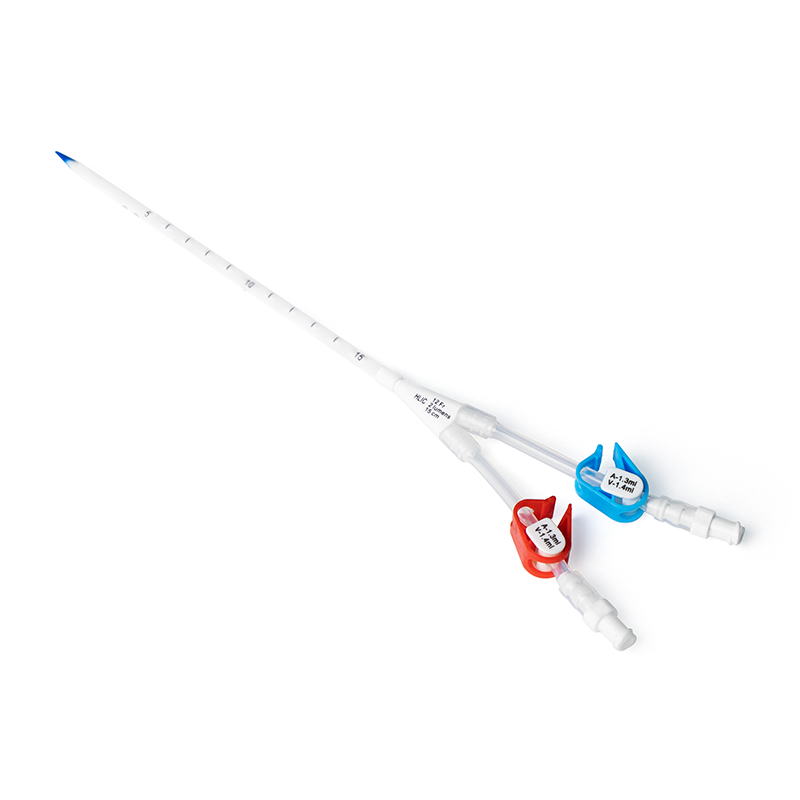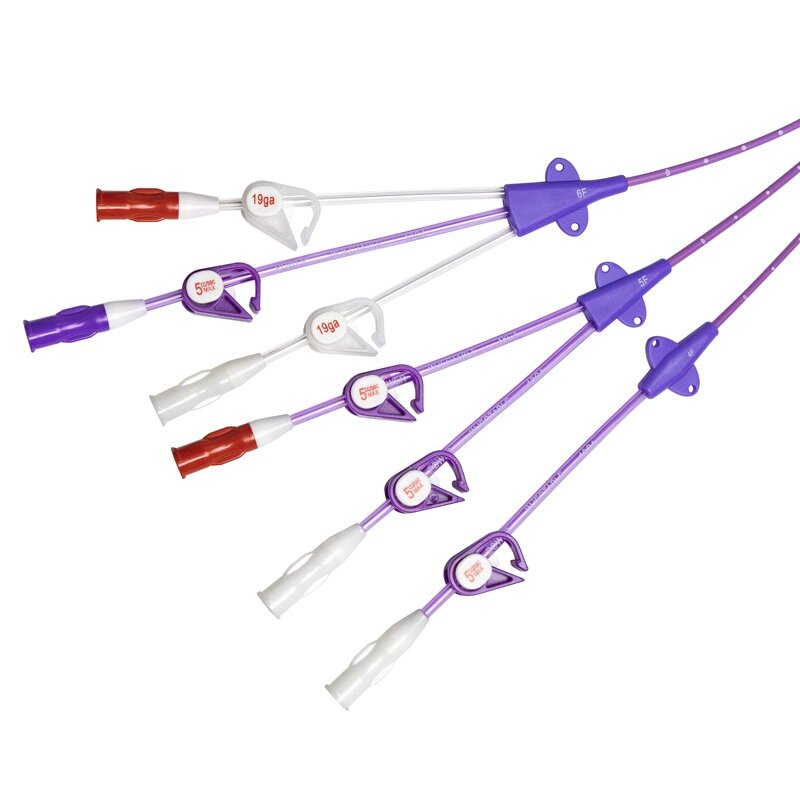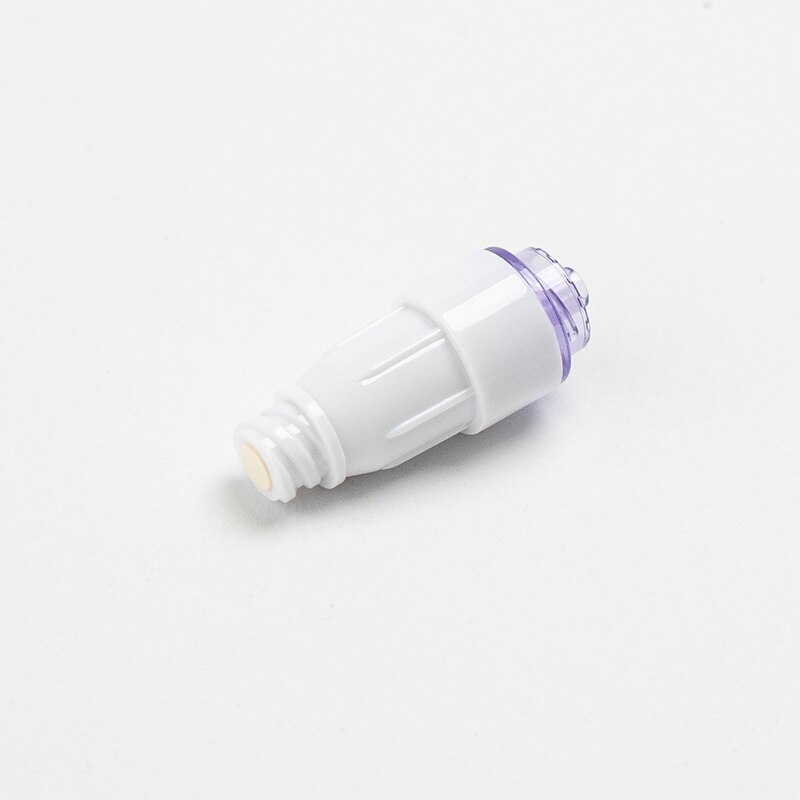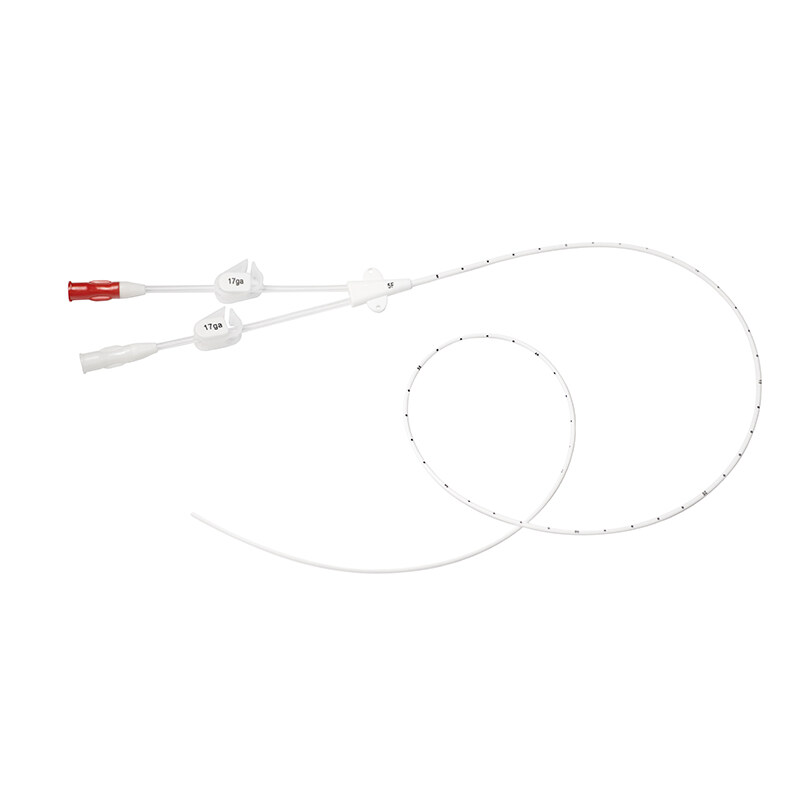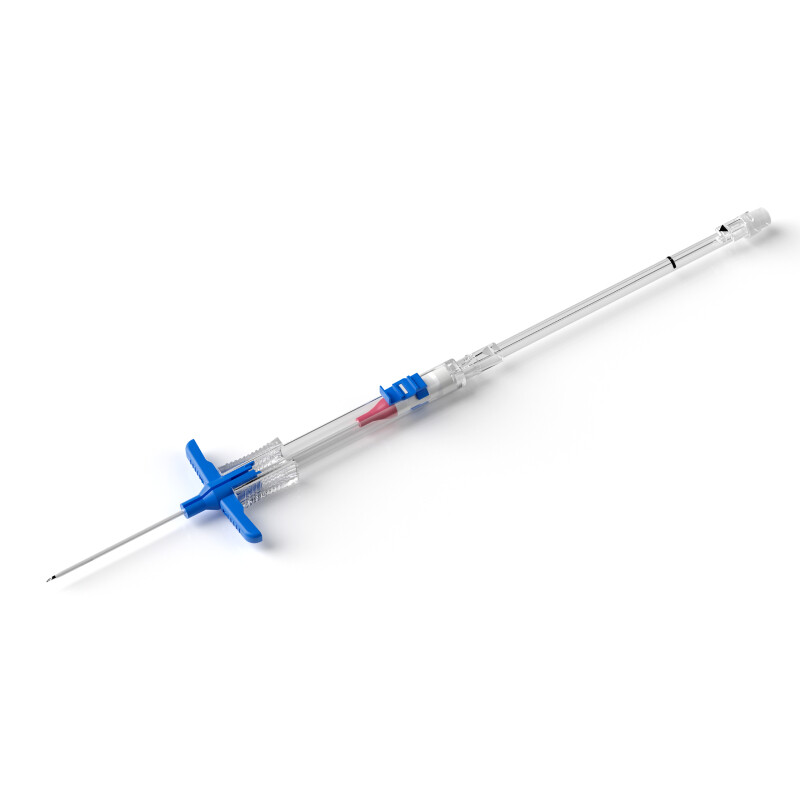Hemodialysis catheters are an essential tool in the management of kidney failure, and they play a crucial role in providing life-sustaining treatment to patients.
A hemodialysis catheter is a type of medical device used to access the blood vessels for hemodialysis treatment. Hemodialysis is a life-sustaining treatment that is used to remove waste and excess fluid from the blood in individuals with kidney failure.
Hemodialysis catheters are temporary access devices that are used when other types of access, such as fistulas or grafts, are not available or cannot be used. They are inserted into a large vein in the neck or chest and are designed to be used for short-term or long-term access to the bloodstream.
Hemodialysis catheter kits have two openings inside; one is a red (arterial) opening to draw blood out of the patient's body into the dialysis pathway and the other is a blue (venous) opening that allows cleaned blood to return to the patient's body.
Hemodialysis catheter kits are used during the insertion of the catheter and contain all the necessary components, such as the catheter, guidewire, and syringes.
When choosing a hemodialysis catheter kit, it is essential to select one that is designed for the intended purpose and is compatible with the patient's condition. The kit should also contain all the necessary components for the procedure and be sterile to minimize the risk of infection.
Hemodialysis access catheter is also widely available in healthcare settings, including hospitals, clinics, and dialysis centers. However, it is important to consult with a healthcare provider to determine if a hemodialysis catheter is the best option for a patient's needs.

Hemodialysis Catheter Procedure
The hemodialysis catheter insertion procedure involves the following steps:
● Preparing the patient
● Administering local anesthesia
● Hemodialysis catheter insertion
● Securing the catheter
● Checking the catheter's function
The patient may experience some discomfort at the insertion site after the hemodialysis catheter procedure, but this usually goes away within a few days. The hemodialysis catheter insertion site will need to be kept clean and dry to prevent infection.
It's important to note that hemodialysis catheters are associated with a higher risk of infection and other complications compared to other types of vascular access, so they should only be used when necessary.
How Is a Hemodialysis Catheter Inserted?
A hemodialysis catheter is inserted by a trained healthcare professional using a sterile technique. The area where the catheter will be inserted is cleaned and numbed with a local anesthetic. The catheter is then inserted into the vein and advanced until it reaches the desired location.
How Long Can a Hemodialysis Catheter Be Used?
Hemodialysis catheters are designed to be used for a limited amount of time. In general, they are intended for short-term use, usually up to several weeks. However, with proper care, a hemodialysis catheter insertion can be used for up to several months.
In addition to proper care and maintenance, patients should also be aware of the signs and symptoms of complications associated with hemodialysis catheters. Hemodialysis catheter complications include fever, chills, redness or swelling around the catheter site, and difficulty breathing. If any of these symptoms occur, patients should contact their healthcare provider immediately.
Hemodialysis Catheter Price
The cost of a hemodialysis catheter can vary depending on several factors, including the hemodialysis catheter types, the hemodialysis catheter manufacturers and suppliers. In general, hemodialysis catheter kits are relatively affordable and are covered by most health insurance plans.
Patients should consult with their healthcare provider to determine which type of catheter and kit is best suited for their needs.
Conclusion
A hemodialysis catheter kit is a critical medical device that is used to access the bloodstream during hemodialysis treatment. Proper hemodialysis catheter care and maintenance can minimize risks and ensure the safety and well-being of patients.
Hemodialysis catheters are relatively affordable and widely available, and the use of a hemodialysis catheter kit can make the insertion procedure more efficient and safe. With the right care and attention, hemodialysis catheters can provide a lifeline for patients with kidney failure, helping them to maintain their health and quality of life.

